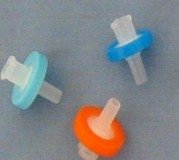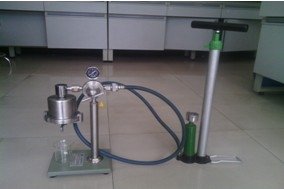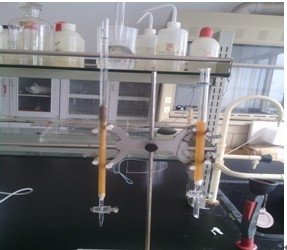Welcome to the official website of Qingdao Puren Instrument Co., Ltd
Abstract: Several methods of pretreatment of ion chromatographic samples were reviewed, including membrane treatment, solid phase extraction, decomposition, electrodialysis
Key words: ion chromatographic sample pretreatment review
With the continuous development of ion chromatography technology, its application is also expanding; the same time, with the type and morphology of the sample to be measured, the traditional ion chromatography sample processing methods such as dilution, filtration, etc. can not meet the requirements of the analysis, the more The more sample treatment methods are used by ion chromatographic analysis. General removal of inorganic impurities in the sample Main pretreatment methods: membrane treatment, solid phase extraction. Removal of organic impurities in the sample Main pretreatment methods: decomposition, electrodialysis. This article describes several common approaches.
In this paper, we reviewed the new technology of sample pretreatment of ion chromatography, such as Ding Xiaojing, and so on. Ye Mingli, Tian Songbai, Jiang Renyi and Slingsby also introduced the methods of pretreatment of various ion chromatographic samples [2 -5] article.
1 film treatment method
1.1. Filter and sand core treatment
Particles were mainly removed using 0.45 or 0.22 μm microporous membranes. Since most of the filters are not specifically designed for ion chromatography, the filter must be washed with deionized water several times before use, and blanking is required for low levels; this method can only remove particulate matter and can not remove water-soluble organic compounds.


And macromolecules can not be retained and retained, dialysis colloidal solution will be placed in the semipermeable membrane composition of the dialysis device, outside the device. The colloidal solution is periodically replaced by a dispersion medium (usually water) to achieve the purpose of purifying the colloid
Ultrafiltration is a pressure film separation technology, that is, under a certain pressure, so that small molecules solute and solvent through a certain pore size of the special film, so that macromolecules solute can not pass, stay on the side of the membrane, so that Macromolecules have been partially purified. Ultrafiltration and filtration principle, is the external pressure of the membrane separation. Ultrafiltration is one of the most widely used membrane technology, mainly used to deal with biochemical samples containing macromolecules, the use of the film to a one-time-based, in order to avoid cross-contamination of the sample.

1.3. Electrodialysis
Electrodialysis utilizes the electrostatic adsorption and the selectivity of the anion and cation exchange membrane to selectively enrich the ions to be analyzed, which can effectively remove particulate matter, organic contaminants, and also remove heavy metal ions from pollutants that are most effective in treating complex matrix samples One of the local methods [6-8]. Electrodialysis mainly in the off-line way to clean the strong alkaline samples in the determination of the common inorganic anions.

2 solid phase extraction
2.1 Phase and adsorption solid phase extraction
There may be a variety of types for reverse phase or adsorption stationary phases. From the fixed phase particle size, can be divided into conventional adsorption resin can also be used solid phase microextraction, the difference is the amount of treatment samples are different; and stationary phase can also be used silica gel or polymer type, but note that , For high pH samples, it is advisable to use a polymer type stationary phase.

2.2 ion exchange resin method
This method we must not unfamiliar, different types of ion exchange resin can effectively remove different targeted pollutants, such as cation exchange resin can remove metal ions pollution, silver anion exchange resin can be excessive chloride ions or other halogen anion removal , While the barium anion exchange resin can remove excess sulfate ions.

3 chemical reaction matrix elimination method
Chemical reaction matrix elimination method is based on the interference of the substrate and the chemical composition of the components to be tested, the use of chemical reaction characteristics, the stoichiometric relationship will interfere with the matrix through the chemical reaction to achieve separation of components to be tested. Common chemical reactions are redox, complexation, precipitation, ion exchange and so on. The method is used to clarify the chemical state and form of the matrix, and it should be noted that the elimination of the original matrix interference at the same time as far as possible to avoid the new interference components. The main advantage of this method is simple, flexible, does not require special equipment; the disadvantage is easy to bring the impurities of chemical reagents, the operation time-consuming, the problem is limited; the scope of the chemical composition is relatively clear matrix, with a fixed chemical Reaction to the sample.
4 decomposition method
4.1 Oxygen bomb combustion decomposition method
The composition of the organic compounds or the elements in the organism is determined by ion chromatography. It is usually decomposed into inorganic ions and then separated. The simplest sample treatment method is oxygen (combustion) [9-12]. The specific method is to put the sample into the oxygen bottle (bomb), the oxygen into the combustion for a few seconds, the element to be measured directly into gas or ions, the bottle (shell), the external absorption of gas absorption into the ions to be measured, After the volume of the absorption solution can be carried out by ion chromatography. Oxygen Bomb Combustion The pretreatment of the sample is carried out in a closed system, which can reduce sample contamination and loss.

4.2 high temperature furnace roasting decomposition method
For the decomposition of the higher temperature, the lower the content of elements to be measured and the sample size of the sample is generally not suitable for high-temperature furnace culture method, the need to add the elements of the test agent, such as calcium hydroxide, the first low-temperature heating in the furnace for some time, And then gradually heated to the sample decomposition temperature of 100 to 150 degrees or more, after roasting with solution dissolved by volume and then by ion chromatography. Can be used for rock and mineral, plant, biological samples of the test.
Oxidation of ultraviolet light decomposition method
Oxidation of ultraviolet light decomposition method is mainly used to digest the organic matter in the sample to determine the inorganic ions, when the determination of samples containing Mn2 +, I- and SO32- and other components easily oxidized, you can not use the method. It is of interest to IC analysts because of the least amount of reagents, less pollution, narrower reagents, low white values, and higher recovery. The time for the decomposition of the ultraviolet light may vary depending on the type of the sample and the amount of the organic matter. The purpose of hydrogen peroxide is to provide free radicals to destroy the residual organic matrix to accelerate the degradation of organic matter. On the other hand, the reaction product of hydrogen peroxide is only water and oxygen without interfering with the determination
5 Conclusion: sample pretreatment directly affects the ion chromatography analysis of the speed, sensitivity, precision. Therefore, in the determination of the actual sample should be based on the nature of the sample, test requirements and equipment to select the appropriate sample pretreatment method, so as to achieve rapid and accurate analysis purposes.
references:
[1] Ding X J, Mou S F. Environmental Chemistry, 2001, 20 (5): 507
[2] Ye M L, Shi Q H, Wang Y Q. Modern Scientific Instruments (Ye Mingli, Shi Qinghong, Wang Yiqi. Modern Scientific Instruments), 2004 (2): 49
[3] Tian S B. Rock and Mineral Analysis, 1999, 18 (1): 77
[4] Jian g R Y. Zhang X H. Nonferrous M etal Analytical Commu- ications (1990), 1990 (5): 17
[5] Sfingsby R, Kiser R. Trend Anal Chem, 2001, 20 (6/7): 288
[6] Li Y S, Hu R z, Tian Z W. Chinese Journal of Chromatog-raphy (Li Yuan Shan, Hu Rongzong, Tian Zhaowu. Chromatography), 1990, 8 (2): 93
[7] Wu S C, Hu R Z, Huang W X, Pan D M, Jiang Z S. Petro-chmical Technology (Wu Shouchao, Hu Rongzong, Huang Weixiong, Pan Danmei, Jiang Zongshan. Petrochemicals), 2006,35 (4): 384
[8] Fan Q Y, Ji J Y, Yan X J. Environmental Monitoring in China, 1996, 12 (1): 48 (in Chinese)
[9] Jiang J H. Chinese Journal of Chromatography, 2006, 24 (4): 423
[10] Fu H T. Chinese Journal of An alysis Chemistry (Fu Huan Tun. Analytical Chemistry), 2003,31 (3): 376
[11] Shi N J. Chemical Analysis and Meterage, 2005, 15 (1): 4
[12] Cortes. Pena M A, Perez-Arribas L V, Leon-Gonzalez M E, Polo. Diez L M. Waste Man ag Res, 2002, 20 (3): 302
[13] Liu Yongjian, Mou Shifen. Determination of Alkali, Alkaline Metals and Ammonium in Organic Molecules in Liquid Crystals by Ultraviolet Photodegradation Ion Chromatography. 2002.30 (5): 527 ~ 530
[14] Liu Yongjian. Mou Shifen. UV degradation. Determination of Anions in Liquid Crystalline Compounds by Ion Chromatography. Chromatography, 19 (6): 493 ~ 49
Qingdao Pu Ren Instrument Technology Yue Jingwei